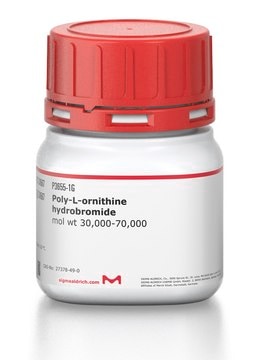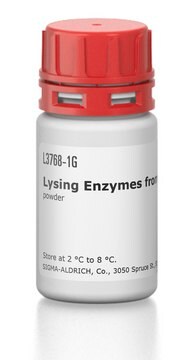F1141
Bovine Fibronectin
from bovine plasma, liquid, suitable for cell culture
Synonym(s):
Fibronectin
About This Item
Recommended Products
product name
Fibronectin bovine plasma, solution, sterile-filtered, BioReagent, suitable for cell culture
biological source
bovine plasma
Quality Level
sterility
sterile-filtered
product line
BioReagent
form
solution
packaging
pkg of 1 mg
pkg of 2 mg
pkg of 5 mg
technique(s)
cell culture | mammalian: suitable
surface coverage
1‑5 μg/cm2
UniProt accession no.
Binding Specificity
Peptide Source: Collagen
Peptide Source: Fibrinogen
shipped in
wet ice
storage temp.
2-8°C
Gene Information
bovine ... FN1(280794)
Looking for similar products? Visit Product Comparison Guide
General description
Application
- fibronectin and adsorption analysis (ELISA (enzyme-linked immunosorbent assay))
- transwell migration
- fibronectin assay
Biochem/physiol Actions
Analysis Note
Other Notes
Signal Word
Danger
Hazard Statements
Precautionary Statements
Hazard Classifications
Resp. Sens. 1 - Skin Sens. 1
Storage Class Code
12 - Non Combustible Liquids
WGK
WGK 3
Flash Point(F)
Not applicable
Flash Point(C)
Not applicable
Personal Protective Equipment
Certificates of Analysis (COA)
Search for Certificates of Analysis (COA) by entering the products Lot/Batch Number. Lot and Batch Numbers can be found on a product’s label following the words ‘Lot’ or ‘Batch’.
Already Own This Product?
Find documentation for the products that you have recently purchased in the Document Library.
Customers Also Viewed
Articles
Fibronectin (FN) is a multifunctional, extracellular plasma glycoprotein produced by hepatocytes that circulates at near micromolar concentration and assembles into extracellular matrix fibrils at cell surfaces along with locally produced cellular FN.
Attachment Factors for 3-Dimensional Cell Culture
The extracellular matrix (ECM) is secreted by cells and surrounds them in tissues.
3D cell culture overview. Learn about 2D vs 3D cell culture, advantages of 3D cell culture, and techniques available to develop 3D cell models
Protocols
Dilute fibronectin to the desired concentration. Optimum conditions for attachment are dependent on cell type and application. The typical coating concentration is 1 – 5 ug/cm2.Fibronectin coating protocol, products, and FAQs.
Our team of scientists has experience in all areas of research including Life Science, Material Science, Chemical Synthesis, Chromatography, Analytical and many others.
Contact Technical Service









